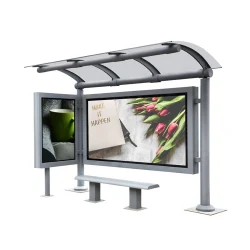What is urban furniture?
2024-06-07
Urban furniture, also known as street furniture or city furniture, refers to functional and aesthetic elements installed in public spaces within urban environments. These pieces of furniture are designed to enhance the usability, comfort, safety, and overall experience of urban areas for residents, visitors, and pedestrians. Urban furniture serves both practical and aesthetic purposes and includes a wide range of items such as benches, litter bins, bike racks, bus shelters, planters, streetlights, bollards, and public art installations. Here are some key characteristics and examples of urban furniture:
1. Benches: Benches are one of the most common types of urban furniture, providing seating for pedestrians to rest, socialize, and enjoy public spaces such as parks, plazas, and sidewalks.
2. Litter Bins: Litter bins, trash cans, or waste receptacles are installed throughout urban areas to encourage proper disposal of trash and keep streets and public spaces clean and tidy.
3. Bike Racks: Bike racks are installed in urban areas to provide secure parking and storage for bicycles, encouraging cycling as a mode of transportation and promoting sustainable mobility.
4. Bus Shelters: Bus shelters or transit shelters provide protection from the elements for public transit passengers waiting for buses or trains. They typically feature seating, lighting, and signage indicating routes and schedules.
5. Planters: Planters or flower beds are installed along sidewalks, plazas, and streets to add greenery, enhance aesthetics, and improve air quality in urban areas. They may contain a variety of plants, flowers, shrubs, or trees.
6. Streetlights: Streetlights provide illumination for roads, sidewalks, and public spaces, enhancing safety and visibility during nighttime hours. They may also incorporate features such as banners, flags, or decorative elements to enhance the aesthetic appeal of urban streetscapes.
7. Bollards: Bollards are short, sturdy posts or barriers installed along sidewalks, streets, and pedestrian areas to control traffic, protect pedestrians, and delineate pedestrian zones from vehicular traffic.
8. Public Art Installations: Public art installations such as sculptures, murals, and interactive artworks contribute to the cultural identity and vibrancy of urban spaces, adding visual interest and enhancing the pedestrian experience.
9. Wayfinding Signage: Wayfinding signage, including maps, directional signs, and informational kiosks, helps pedestrians navigate urban environments, find points of interest, and locate amenities such as public transportation, restrooms, and parks.
10. Playgrounds and Recreational Equipment: Playgrounds, outdoor fitness equipment, and recreational facilities such as basketball courts or skate parks provide opportunities for physical activity and leisure in urban neighborhoods.
Overall, urban furniture plays a crucial role in shaping the character, functionality, and livability of urban areas, contributing to the social, economic, and environmental well-being of cities and communities.



